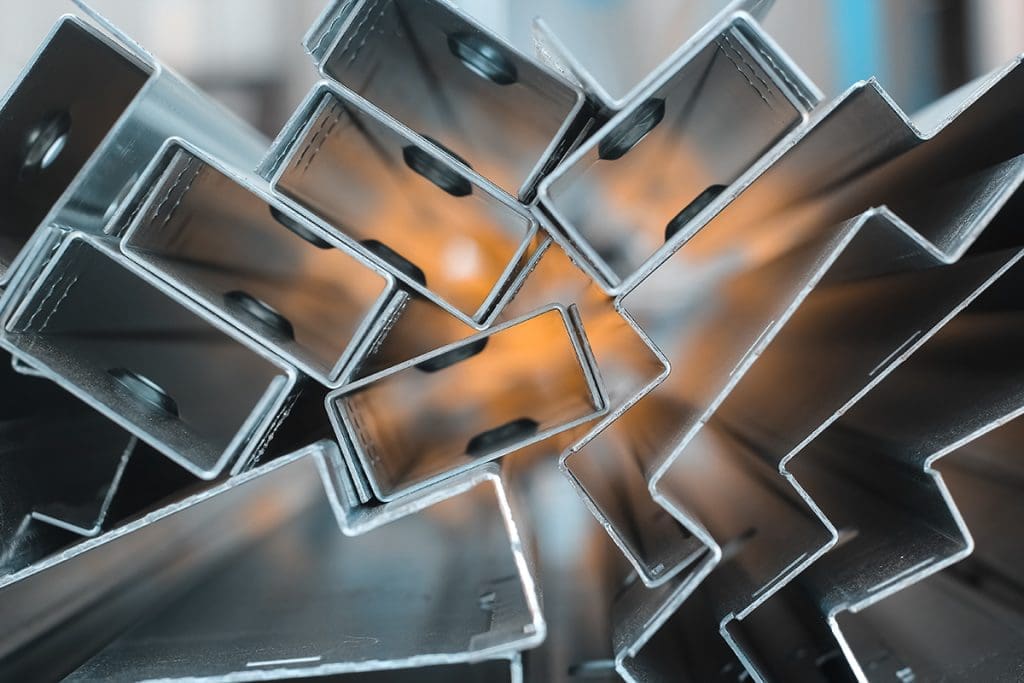When you order metal fabrications, you want confidence that you won’t get defective pieces back. You need to know that your fabricators have the knowledge and skill to perform industrial alchemy and provide you with high-quality metal pieces.
Metal fabrication is more than simply bending rebar and welding plates. It involves complicated metallurgical processes that give your products the qualities they need. When your parts and pieces are fabricated, thousands of alloys and compositions can be used, and choosing the correct grade of steel or aluminum takes nothing less than alchemical knowledge.
Carbon Steel
Steel is a combination of iron and carbon. The structure provided by this combination of materials produces a more robust and more durable material. Carbon steel specifically refers to steel made with carbon and no elements that would result in alloy steel.
There are three major grades of carbon steel:
- Low Carbon: Inexpensive and easy to form, the most common type of carbon steel.
- Medium Carbon: Stronger but more challenging to work with, common in machinery.
- High Carbon: Extremely hard and tough to work, this material is common in railways.
Carbon steel is one of the most common types of steel, and it is highly valuable for its strength and resistance to damage. However, there are some drawbacks. Carbon steel is more difficult to work and manipulate, so it tends to be used in whole pieces—girders, gears, bars, and other solid parts.
Stainless Steel
Stainless steel alloys use chromium for protection against oxidation, rust, and aging, which reduces the strength of your pieces. Chromium also provides an increased sheen and shine. This makes stainless steel attractive for medical equipment, cookware, and other handheld tools. Within stainless steel, there are three major categories:
Austenitic

With a makeup of roughly a quarter of chromium and a third of nickel, these alloys have incredibly high corrosion resistance but lower strength and hardness.
Ferritic
Ferritic alloys are magnetic and very useful in various electronic industries.
Martensitic
Martensitic alloys are solid and hard but oxidize far more quickly than other stainless-steel forms, leading to niche use cases.
Many admire the qualities of stainless steel, which led to its creation through industrial alchemy. Its durability, corrosion resistance, and attractive sheen are desirable in many industries. With this material, we at Brandywine Valley Fabricators can produce goods easily tailored to your needs.
Alloy Steel
An alloy is any mixture of metals, but ‘alloy steel’ refers to a narrow range of mixtures. Alloy steel can be uniquely tailored to various uses and niches but can also be far more expensive. The most common metals used in alloy steels include:
- Chromium
- Cobalt
- Molybdenum
- Nickel
- Tungsten
- Vanadium
Alloy steels can include some materials in the carbon and tooling steel families and more disparate metallic alloys. This large umbrella of metals is always worth considering for your project, but simpler and more common materials will often serve your purposes.
Aluminum

We are well-versed in aluminum metal fabrication, which involves manipulating and working with many aluminum alloys. Aluminum is itself a lightweight and durable material with a high strength-to-weight ratio. This metal is used widely in aeronautic, marine, and automotive industries because its decreased weight allows transportation to handle larger loads. Aluminum comes in two broad categories: wrought aluminum and cast aluminum.
Wrought and cast aluminum are very similar in composition. They use numbers 1-7 to categorize the alloy makeup, starting with 1, indicating nearly pure aluminum for use in fabrication. However, they use different labeling conventions to make them easier to identify and differentiate:
Wrought Aluminum
- 1000 – Nearly pure aluminum
- 2000 – 2%-6% Copper3000 – ~1% Manganese
- 4000 – Silicon, copper, and magnesium alloy
- 5000 – 1%-5% Magnesium
- 7000 – Zinc, magnesium, and copper alloy
Cast Aluminum
- 100.0 – Nearly pure aluminum
- 200.0 – 4%-6% Copper
- 300.0 – 5%-15% Silicon
- 400.0 – 5%-12% Silicon
- 500.0 – 5%-12% Magnesium
- 700.0 – 6%-7% Zinc
These numbers are roughly the alloy percentages, but each category has other considerations when forging, alloying, and using it in metal fabrication. The complicated industrial alchemy behind the scenes provides each alloy with specific qualities and uses. Across both systems, the first digit indicates purity and primary alloys, while the latter indicates heat treatment, additional alloys, and other important information for metallurgy.
Trust the Steel and Aluminum Wizards at Brandywine Valley Fabricators!
When dealing with a fabricator, you don’t want to be confused about what you need for your order. Never settle for anything other than the best possible metal fabrication services for your next order of stainless steel and aluminum parts.
When you call us, we will have a long discussion about the needs of your order, letting you explain in-depth the parts and pieces you want, the expectations for their strength and durability, and any additional qualities you need. This allows us to put all our knowledge and experience to work for you, matching your specifications exactly. When you are ready to place an order, call us, and we will start the conversation.
Resources:

